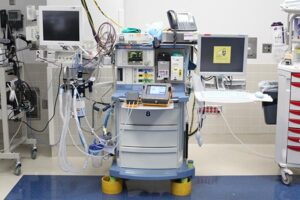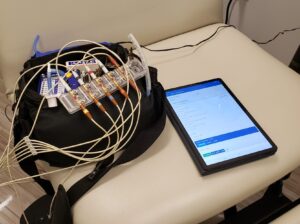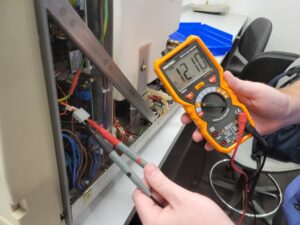Tuttnauer

Choose a Cleaning Plan
Clean your autoclave’s door gasket and chamber lip with a mild detergent and water. Then, wipe with a soft cloth or a sponge to make sure everything is cleaned and ready to go for the day.
TIP: Please make sure the unit is cool before starting to clean, autoclaves can get EXTREMELY hot.
BEFORE RUNNING A CYCLE
- If you have an automatic unit, clean the water sensor in the back of the chamber with a soft damp cloth or sponge. The sides are more important than the top of the sensor, but an all-around cleaning will be very helpful for the unit.
- Take a package of Chamber Brite (Link to Purchase Here), or Tutt Clean (Link to Purchase Here) and sprinkle evenly on the bottom of the chamber. Do NOT put the cleaner in if the autoclave is hot, it will leave burn marks in the bottom of your chamber.
- Running the cleaning cycle:
- Manual Autoclave – Turn the dial to ‘Fill’ and let the unit fill as normal. Once it is full, turn it to sterilize and make sure to set the temperature dial to 273 degrees. Once the unit has reached 273, you can change the timer to 3 minutes.
- Automatic Autoclave – Run a normal sterilization cycle at 273 degrees, 32 psi for 3 minutes. If your autoclave is set to run a dry cycle you do not need to wait for this to finish, just hit the ‘stop’.
WHILE THE AUTOCLAVE IS RUNNING THE CLEANING CYCLE
- When the LCD display tells you there is anywhere between 20 to 30 psi of pressure in the chamber, it’s time to clean the air trap jet. This is done by moving the small protruding wire hook in and out about 10 times. The pressure from the chamber will help blow out any debris from the small jet area.
ONCE THE CYCLE IS COMPLETE
- Once the cleaning cycle has been completed, take a soft cloth of sponge and wipe out the chamber. You may want to let the chamber cool slightly, but don’t let it get cold. Thick gloves are a good idea at this point as the warmer it is, the easier it will be to remove burn marks and dirt. Be careful not to burn yourself on the metal of the chamber if you are not wearing gloves!
- After the chamber is clean, you will need to empty the water reservoir and flush the cleaner out of the system. DO NOT run a sterilization cycle with instruments until this water has been changed.
- Draining the tank is done by turning the water release valve in the bottom right of the corner, behind the door (as seen below)
- With the unit empty of water, you can now fill the reservoir back up and continue sterilizing as normal.
It is very important that the safety valve on the autoclave is kept clean of debris and always in working order. This valve ensures that in the unlikely event of a pressure buildup and complete electronic failure, the vessel will not explode as the steam has a place to escape before building to too high of a pressure.
- Run the autoclave on a normal cycle and wait until the unit has reached 30 psi.
- Remove the water reservoir cover on the top of the unit.
CAUTION: THE NEXT STEP WILL EXPOSE YOU TO HOT STEAM. TO AVOID BEING BURNED, DO NOT PLACE YOUR HAND OR FACE DIRECTLY OVER THE SAFETY VALVE.
- Pull the ring of the safety valve with a screwdriver, pliers or other tool. Pressure from the vessel will force steam out of the valve. Wait 2 – 5 seconds and the valve should jump closed again on its own. If it keeps blowing out steam, just push the release back in again. No damage will be caused if you are unable to get it to close, the pressure will eventually reach zero and the ring will slide back in on its own.
- At this point, you can abort the cycle if its an automatic unit, or if a manual unit, turn the valve to “Exhaust”. You are completed with this process and can continue with usual daily operation.




